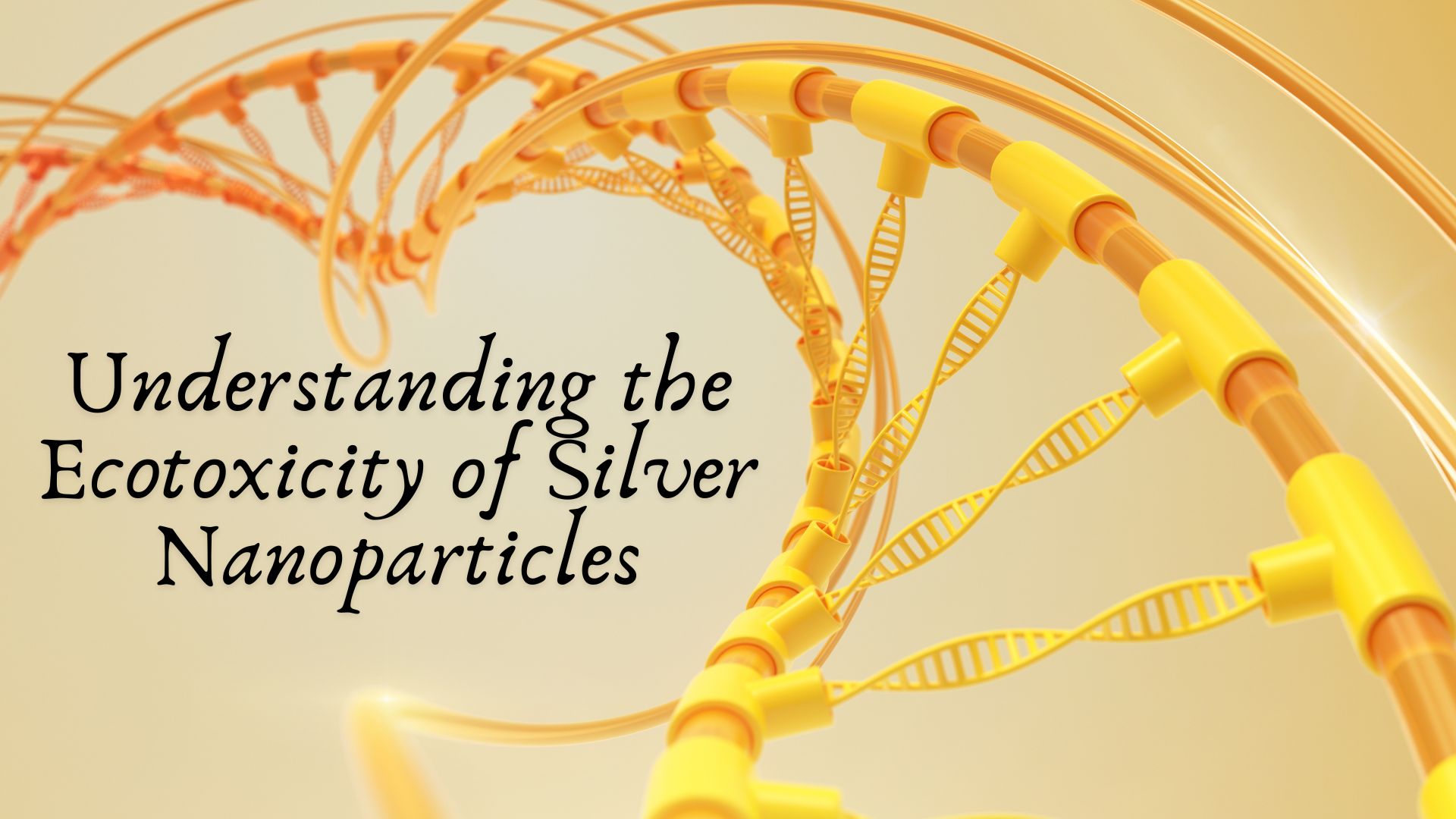Understanding the Ecotoxicity of Silver Nanoparticles
Introduction Silver nanoparticles (AgNPs) have emerged as one of the most widely used nanomaterials due to their potent antimicrobial properties....

Introduction
Silver nanoparticles (AgNPs) have emerged as one of the most widely used nanomaterials due to their potent antimicrobial properties. Found in a range of products—from textiles and personal care items to medical devices and water treatment systems—AgNPs are valued for their ability to inhibit microbial growth. However, the very properties that make them useful also raise concerns about their impact on the environment. As the use of AgNPs continues to rise, so does the importance of understanding their ecotoxicity—their potential to cause harm to ecosystems and organisms.
This article delves into the ecotoxicity of silver nanoparticles, examining their environmental fate, mechanisms of toxicity, and the implications for various ecological systems.
What Are Silver Nanoparticles?
Silver nanoparticles are particles of silver that range in size from 1 to 100 nanometers. They are commonly engineered to enhance antimicrobial action by increasing the surface area to volume ratio, which facilitates the release of silver ions (Ag⁺). These ions are biologically active and play a key role in the material’s toxicity and effectiveness.
AgNPs are incorporated into a variety of consumer products, leading to inevitable release into wastewater systems and the natural environment. Their small size allows them to interact at the cellular and molecular level with organisms, potentially disrupting physiological and ecological functions.
Routes of Environmental Entry
The environmental release of silver nanoparticles can occur through several pathways:
- Wastewater Discharge: AgNPs from household and industrial products enter wastewater treatment plants (WWTPs), where removal is often incomplete.
- Biosolid Application: Treated sludge containing AgNPs is commonly used as fertilizer, leading to soil contamination.
- Runoff and Leaching: AgNPs from textiles and coatings can leach into waterways during washing or weathering.
- Direct Disposal: Improper disposal of AgNP-containing products can introduce nanoparticles directly into terrestrial or aquatic environments.
Environmental Fate and Transformation
Once released, silver nanoparticles can undergo several transformations:
- Aggregation: AgNPs may clump together, changing their size and mobility.
- Dissolution: AgNPs can release silver ions, which are highly reactive and toxic.
- Adsorption: They may bind to organic matter or sediments, affecting their bioavailability.
- Chemical Reactions: AgNPs can react with sulfides, chlorides, and other environmental agents, altering their form and toxicity.
These transformations affect not only the persistence of AgNPs in the environment but also their potential to interact with living organisms.
Mechanisms of Ecotoxicity
The toxicity of silver nanoparticles is generally attributed to both the nanoparticles themselves and the silver ions they release. Key mechanisms of ecotoxicity include:
- Oxidative Stress: AgNPs induce the formation of reactive oxygen species (ROS), damaging cell membranes, proteins, and DNA.
- Disruption of Cellular Processes: AgNPs interfere with ion transport, enzyme function, and energy production.
- Membrane Damage: Interaction with cell membranes leads to permeability changes and eventual cell death.
- Bioaccumulation: Silver nanoparticles can accumulate in organisms, leading to long-term effects and biomagnification up the food chain.
Impact on Aquatic Ecosystems
Aquatic organisms are particularly vulnerable to silver nanoparticles. Research has shown that AgNPs can have deleterious effects on:
- Algae: Disruption of photosynthesis and growth inhibition.
- Daphnia magna (water fleas): Reduced reproduction and increased mortality.
- Fish: Alterations in behavior, gill damage, and immune suppression.
- Microbial Communities: Loss of microbial diversity and function, affecting nutrient cycling and ecosystem stability.
Since many aquatic organisms form the base of food webs, even small disruptions can have cascading effects throughout the ecosystem.
Impact on Soil and Terrestrial Organisms
AgNPs also pose risks to soil health and terrestrial organisms:
- Microbial Communities: Soil bacteria crucial for nutrient cycling are highly sensitive to AgNP exposure.
- Earthworms and Insects: Bioaccumulation can lead to growth inhibition, reproductive effects, and mortality.
- Plant Growth: Root elongation, seed germination, and nutrient uptake can be negatively impacted.
These effects can reduce soil fertility and agricultural productivity, with implications for food security.
Regulatory Landscape and Risk Assessment
While the potential risks of silver nanoparticles are recognized, regulatory frameworks are still evolving. The lack of standardized testing protocols and insufficient long-term data hampers comprehensive risk assessments. Key challenges include:
- Quantifying Environmental Exposure: Measuring the actual concentrations of AgNPs in different environments is difficult due to complex transformations.
- Differentiating Between Nanoparticles and Ions: It’s crucial to distinguish the effects of AgNPs from silver ions to understand true nanoparticle toxicity.
- Ecological Relevance: Laboratory results may not accurately reflect real-world environmental conditions.
Agencies such as the U.S. Environmental Protection Agency (EPA) and European Chemicals Agency (ECHA) are working towards more robust regulations, but a globally unified approach is still lacking.
Future Directions in Research and Mitigation
To better understand and mitigate the ecotoxicity of silver nanoparticles, researchers and policymakers are exploring several strategies:
- Green Synthesis: Producing AgNPs through eco-friendly processes to minimize environmental harm.
- Safer Design: Engineering nanoparticles with reduced toxicity or built-in degradation features.
- Advanced Filtration: Enhancing wastewater treatment systems to capture or neutralize nanoparticles more effectively.
- Long-Term Ecological Studies: Conducting field studies to monitor environmental concentrations and ecosystem responses over time.
Public awareness and responsible use of AgNP-containing products can also play a significant role in reducing environmental release.
Conclusion
Silver nanoparticles, while revolutionary in many applications, pose a significant threat to the environment due to their ecotoxic potential. Their widespread use and persistence in ecosystems underscore the need for cautious deployment, improved waste management, and comprehensive regulation. Understanding the complex interactions between AgNPs and the environment is critical to ensuring that technological advancements do not come at the cost of ecological health.
As we move forward in the age of nanotechnology, striking a balance between innovation and sustainability remains essential. Only through continued research, transparent regulation, and environmental stewardship can we harness the benefits of silver nanoparticles without compromising the integrity of our ecosystems.




